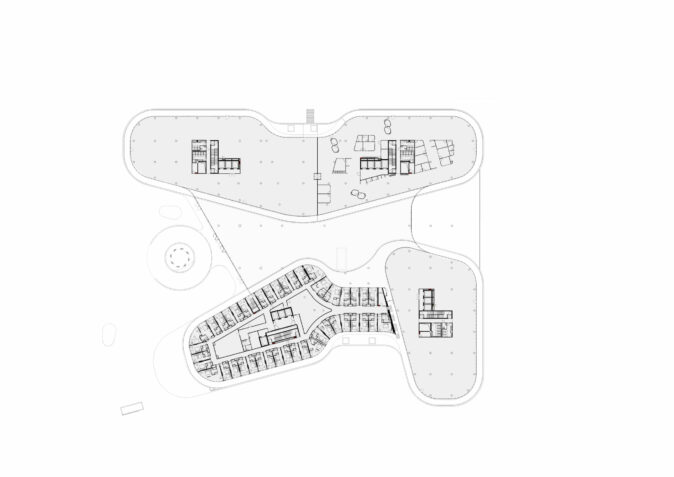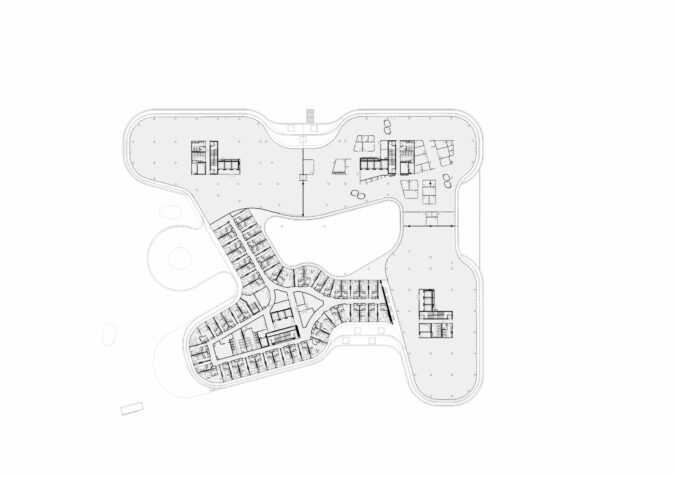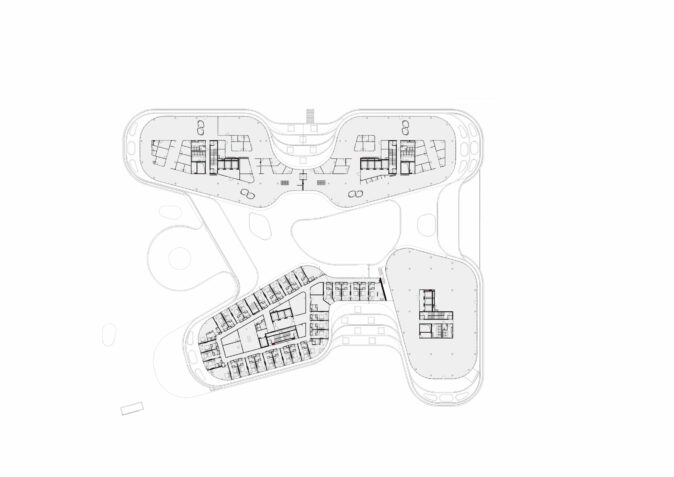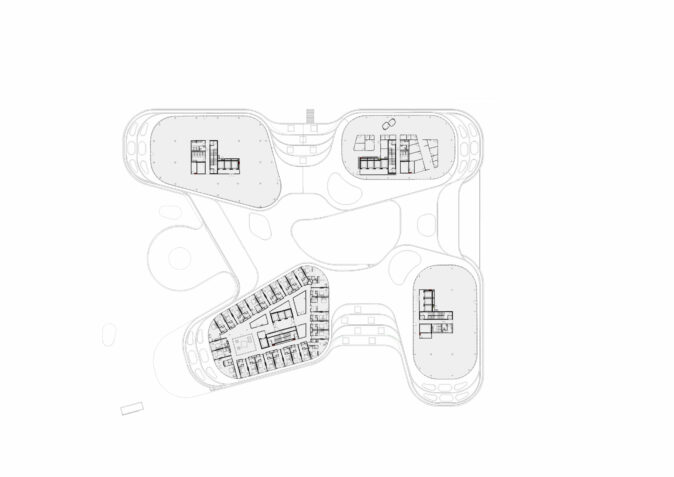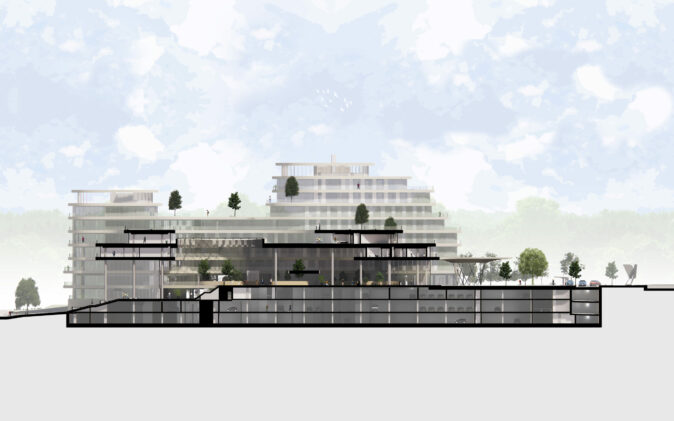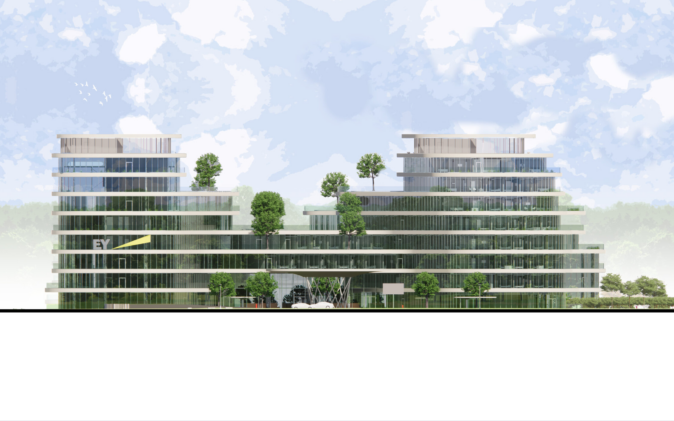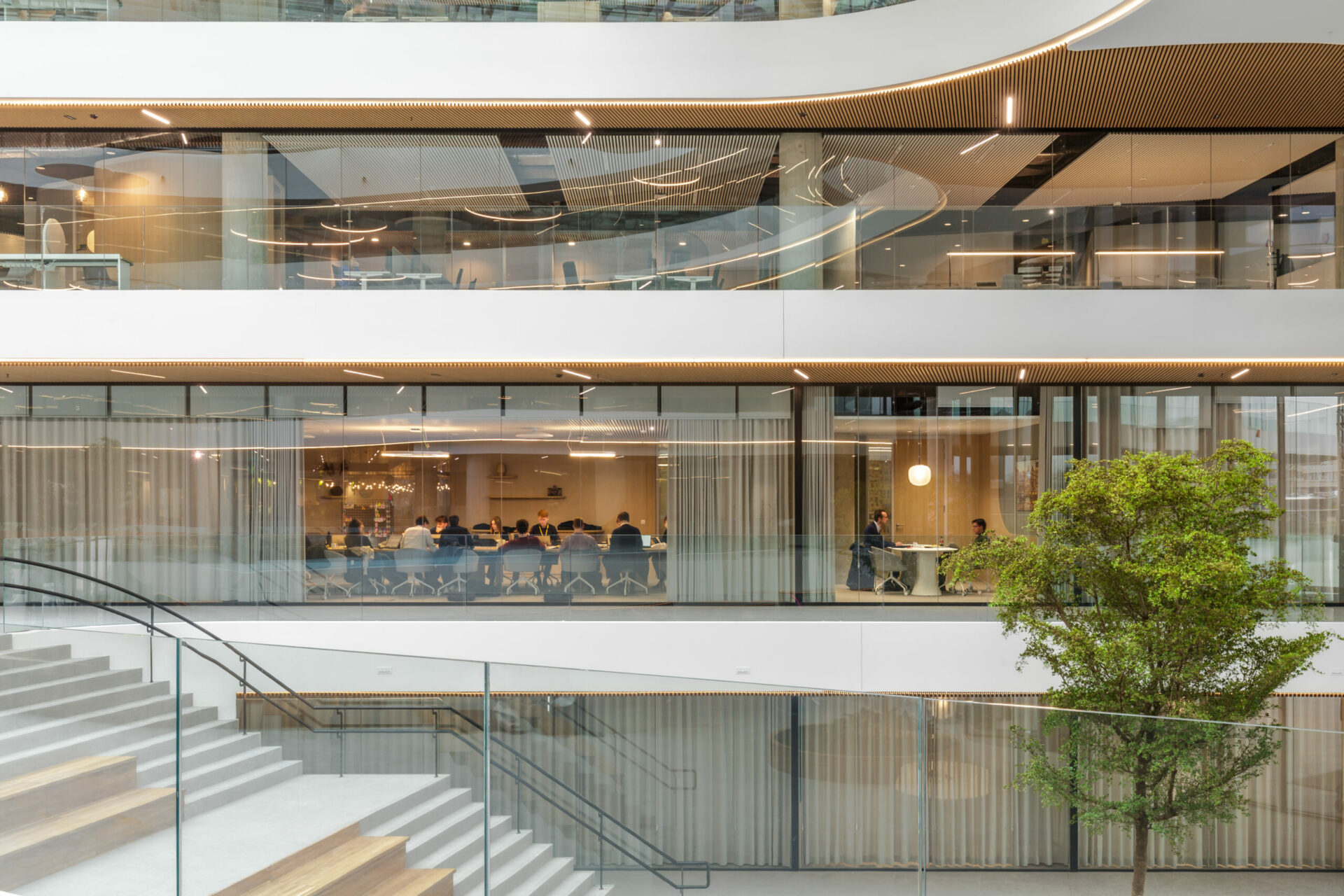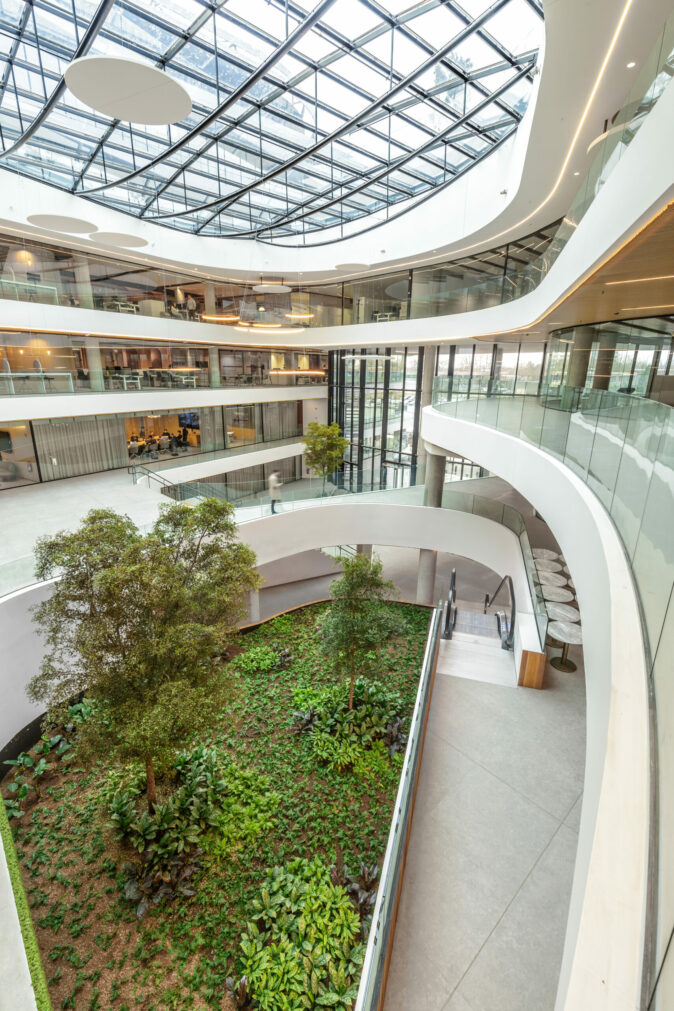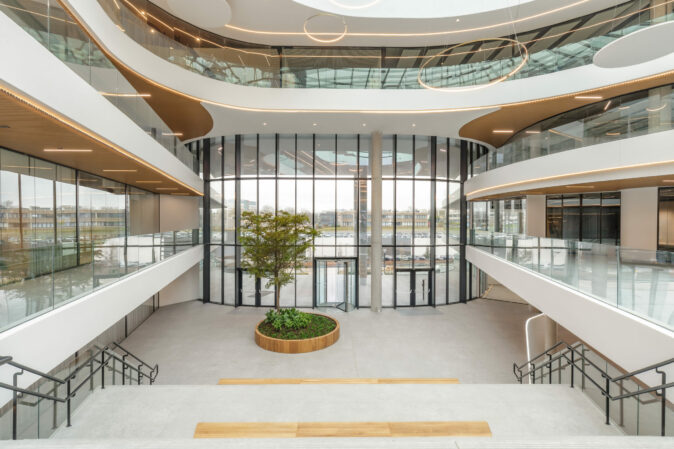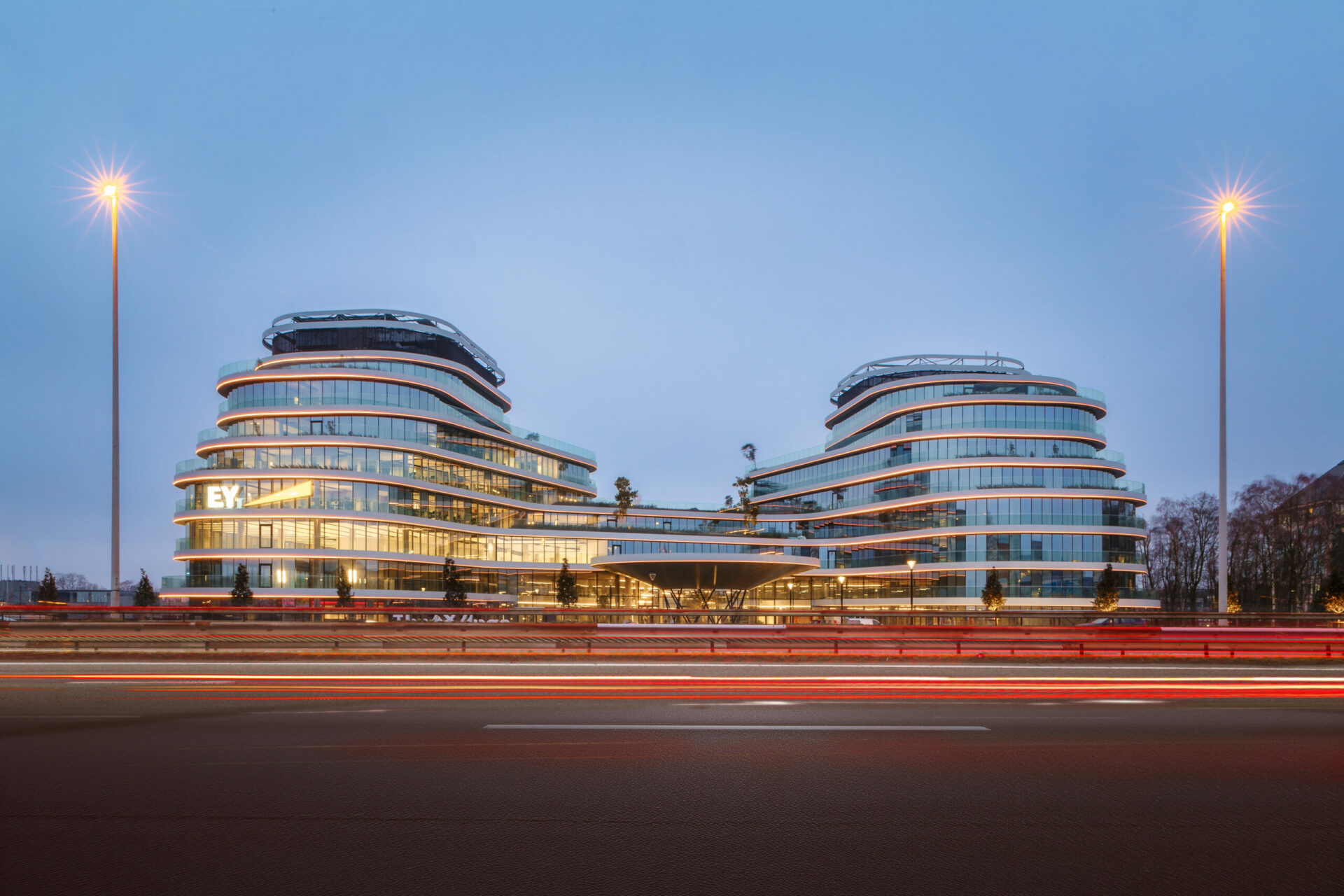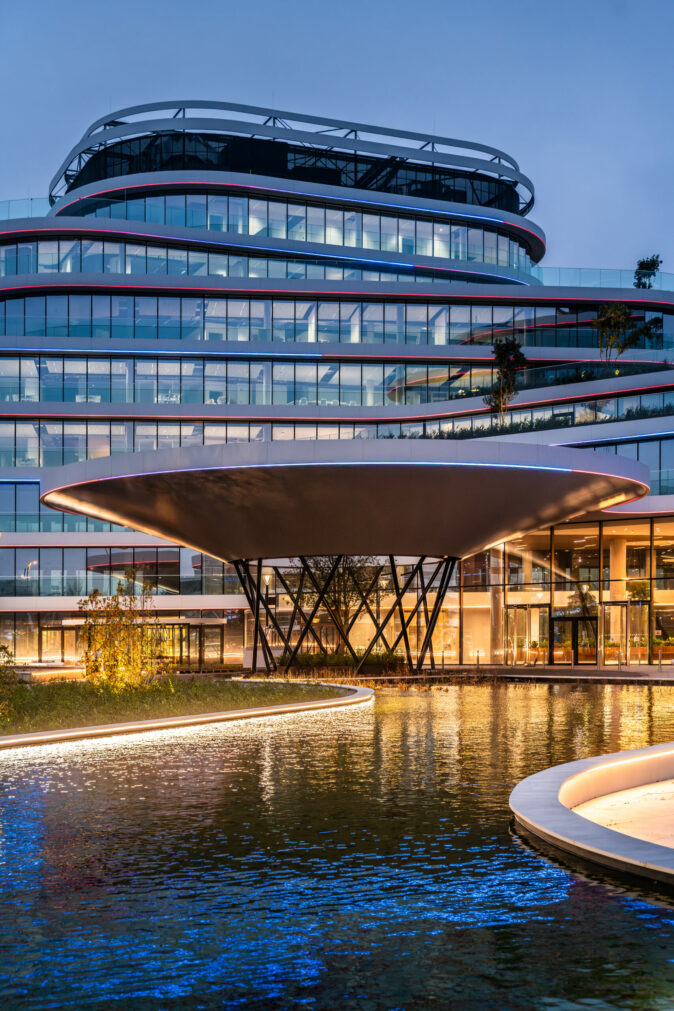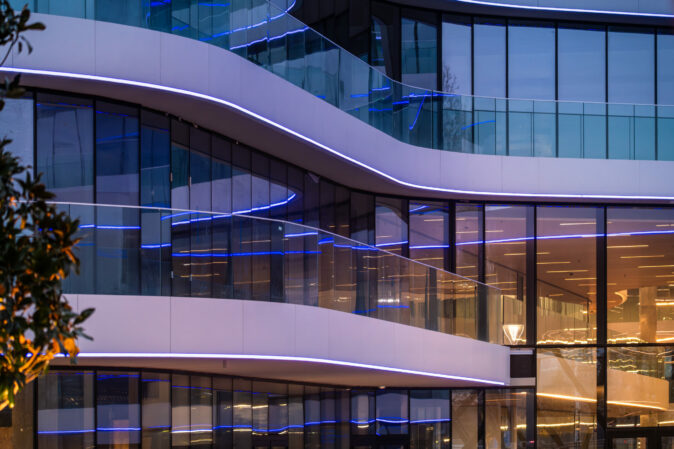how to develop office, hotel & restaurant functions within a carbon-neutral ecosystem with a “BREEAM Excellent” certificate?
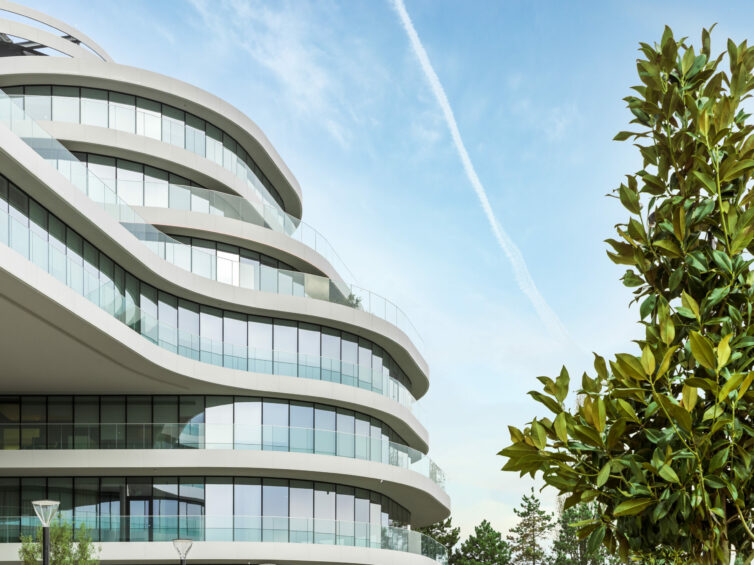
how to develop office, hotel & restaurant functions within a carbon-neutral ecosystem with a “BREEAM Excellent” certificate?

The Wings” our latest project for Ghelamco, stands out not only as an eye-catching addition to Brussels Airport’s international office district but also as a new benchmark in comfort, wellbeing, and sustainability. It marks the first CO2-and energyneutral office environment in Belgium with triple certification: BREEAM Excellent, WELL Gold, and DGNB Gold.
Delivered in early 2024, the building comprises 50.000 m² of high-quality office space, a luxury hotel with 250 rooms, a fitness center, restaurants, an international coworking space for expats, and a large atrium. EY Belgium has established its new headquarters here, complete with a dedicated business center and corporate restaurant. Underground, there are 1.157 parking spaces spread across 3 levels.
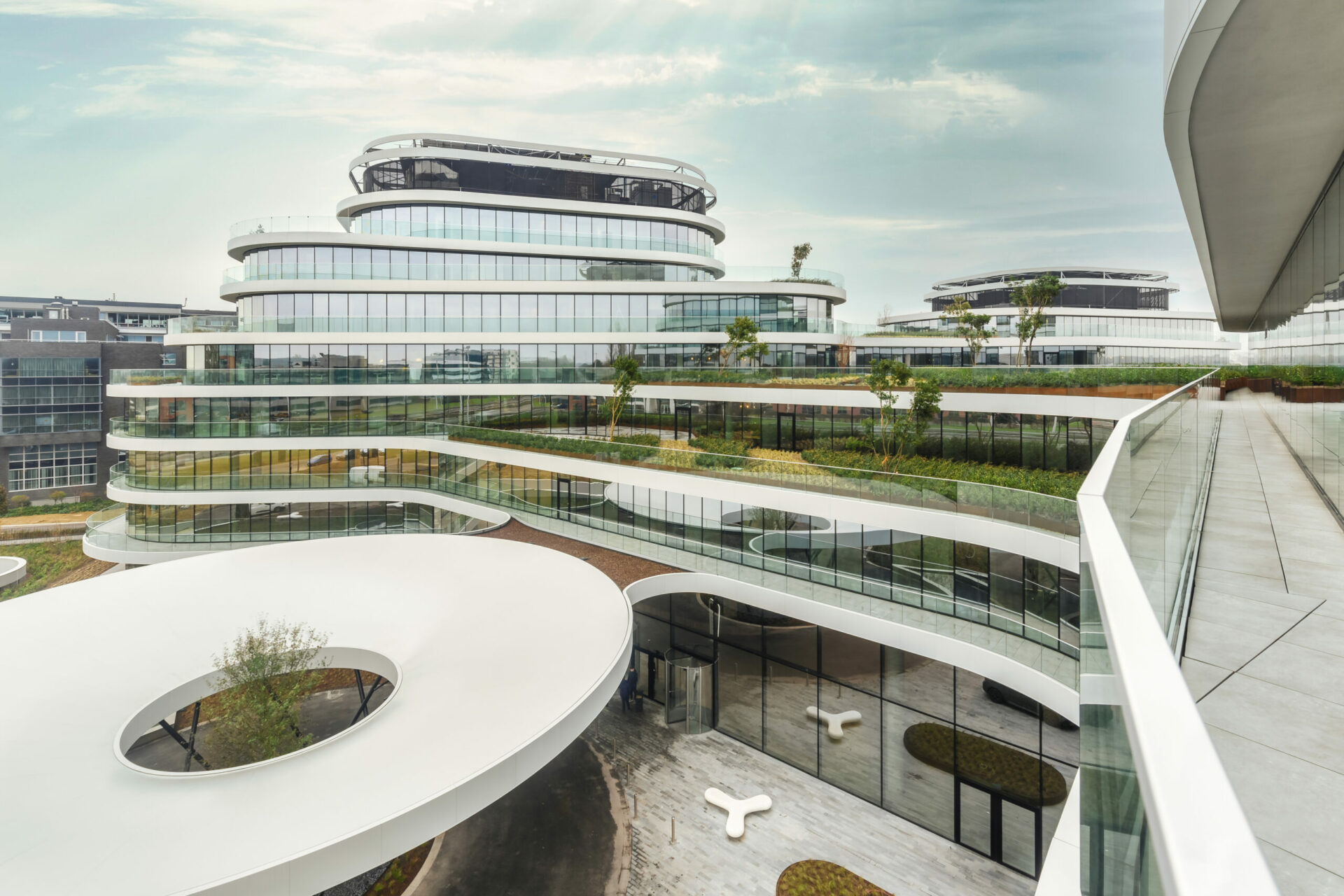
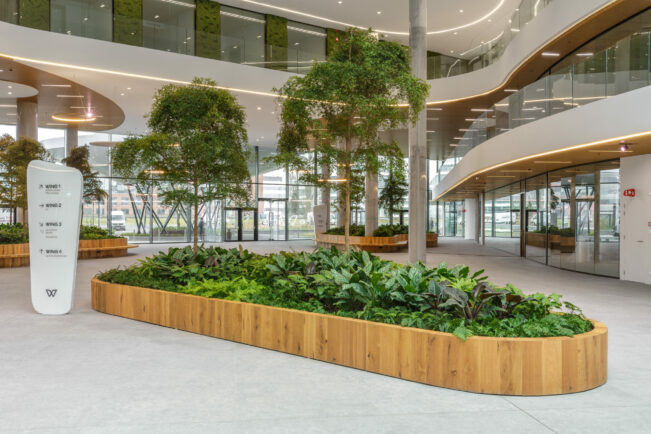
| program | offices, hotel, fitness, restaurants & coworking facilities |
| client | Ghelamco Belgium |
| address | Culliganlaan 3 • 1830 Diegem |
| building type | work |
| status | completed |
| expertises | architectureinterior architecturebimfeasibility studiesprogramming |
| offices | brussels |
| size | 49.367 sq. ft. above ground & 39.992 sq. ft. parking lot |
| team | • architect: assar architects • client: Ghelamco Belgium • structural engineer: Macobo-Stabo • building services: Macobo-Stabo |
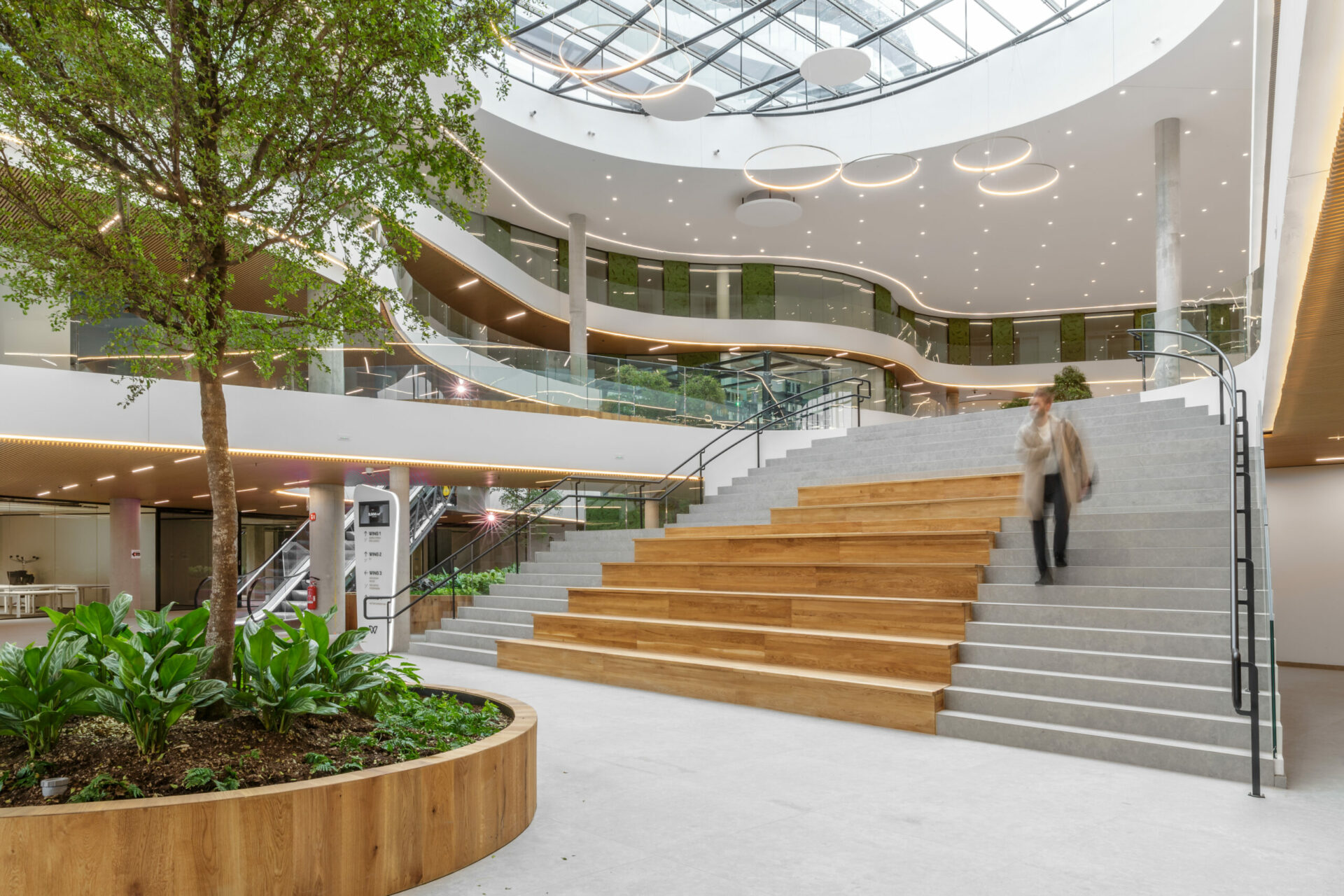
The organic architecture features an abundance of glass, rounded corners, and horizontal façade elements in light gray aluminum cassettes, allowing ample light and subtle integration with the green surroundings.
Initially conceived as a winged model, where the spine would connect the two streets and the wings would extend strategically relative to the neighbours and the forest, it evolved to envision the “spine” as an open passage rather than a physical, built connection, facilitating separate entrances to the wings to accommodate multiple businesses or functions.
After a series of extensive preliminary designs in search of the perfect fit, the quadrant design emerged with the most potential, offering the flexibility to divide or merge the whole, while also providing the most organic form to integrate the building into the environment.
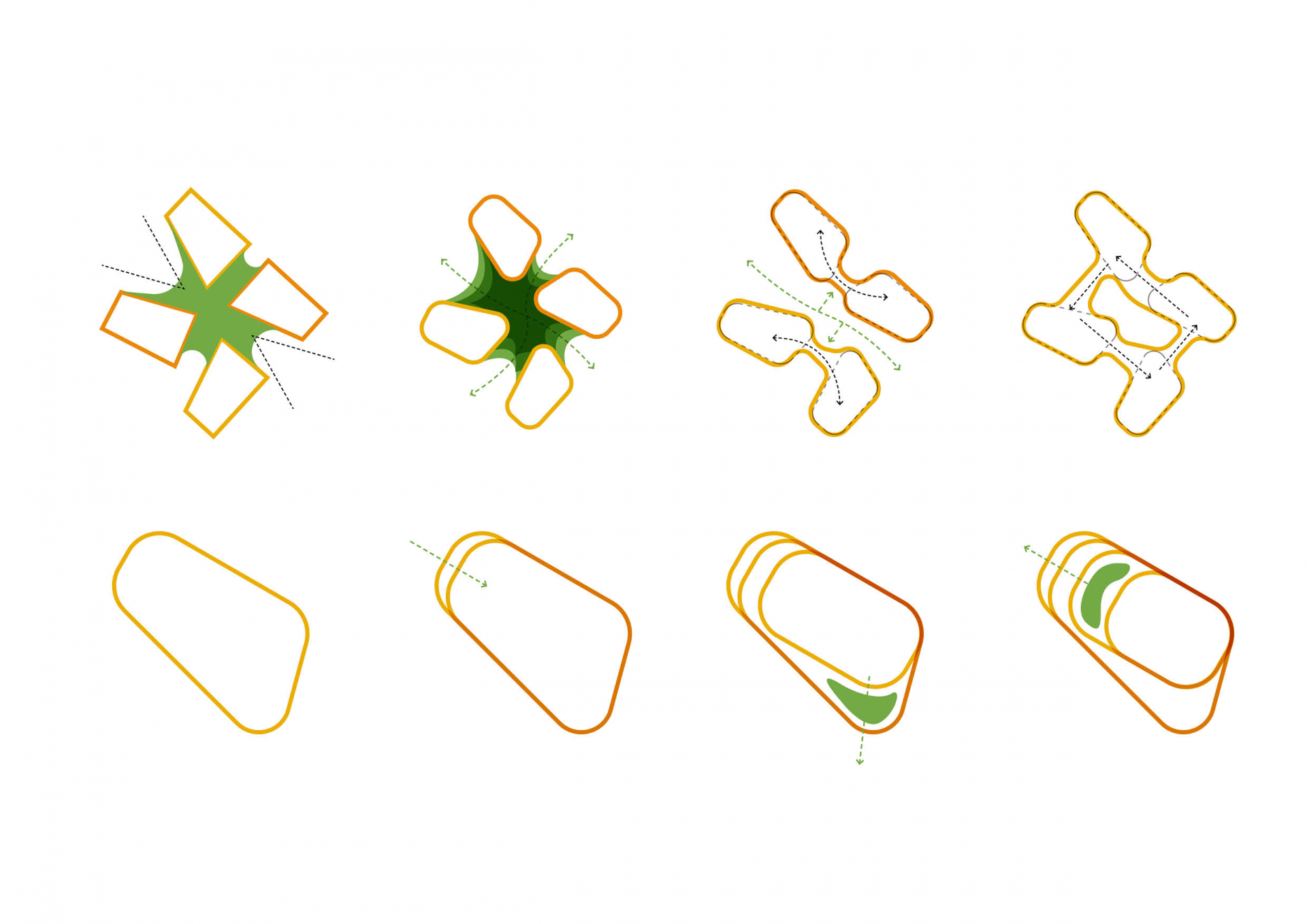
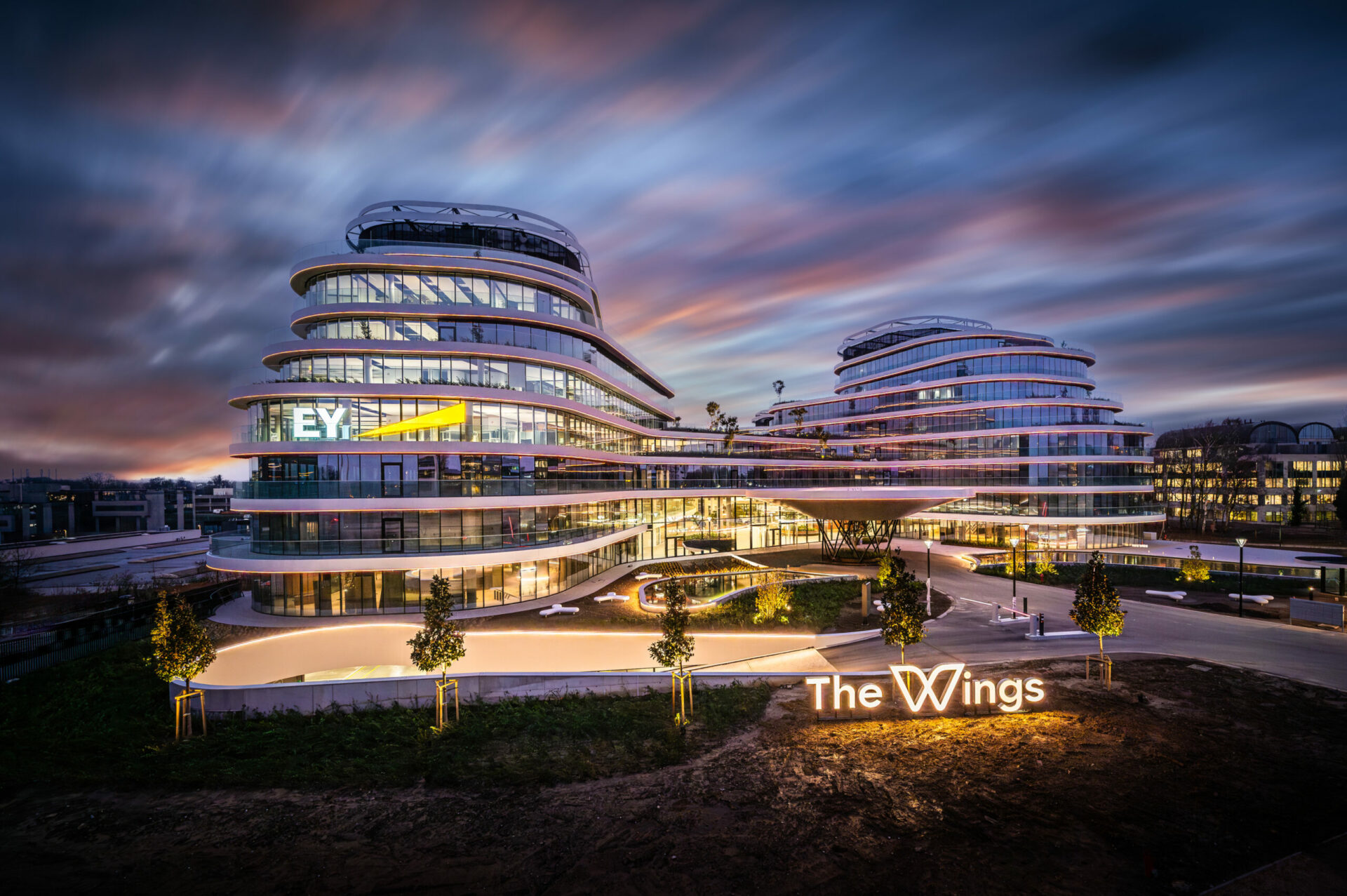
The project site is situated in the municipality of Diegem, in a triple A location strategically positioned near the airport, the Brussels ring road, and several major interchanges.
Its proximity to both the airport and the center of Brussels is an asset for ambitious businesses and local communities alike. Public transportation provides direct connections to both Brussels Airport and Brussels-North railway station, the largest mobility hub in Belgium. The new local tram line (from Brussels Airport to Brussels city center) stops right outside, and Diegem train station is within walking distance. The nearby bike highway “Leuven-Vilvoorde” ensures energetic commuting, and a new bike bridge connects both sides of the ring road.
Easy access to the E40 and N22 further expands the multimodal offering. Thanks to its strategic location, The Wings enjoys the best of both worlds-limited time lost in traffic, excellent public transportation, and exceptional parking facilities.
The surrounding fabric is composed of corporate and office buildings as well as a hotel. The Wings seeks connection with its specific context by integrating itself within the scale of this fabric and nestling within the transportation infrastructure.
The dual access points of the site, both via Culliganlaan and Kouterveldstraat, are leveraged gratefully. The various transportation networks are accommodated through two main entrances within the project, with the permeable building itself forming the connection between the roads.
The plot features a significant level difference between both access axes, with an additional transverse green slope traversing the terrain midway. These two elements, along with the program, outline the main principles of the design.
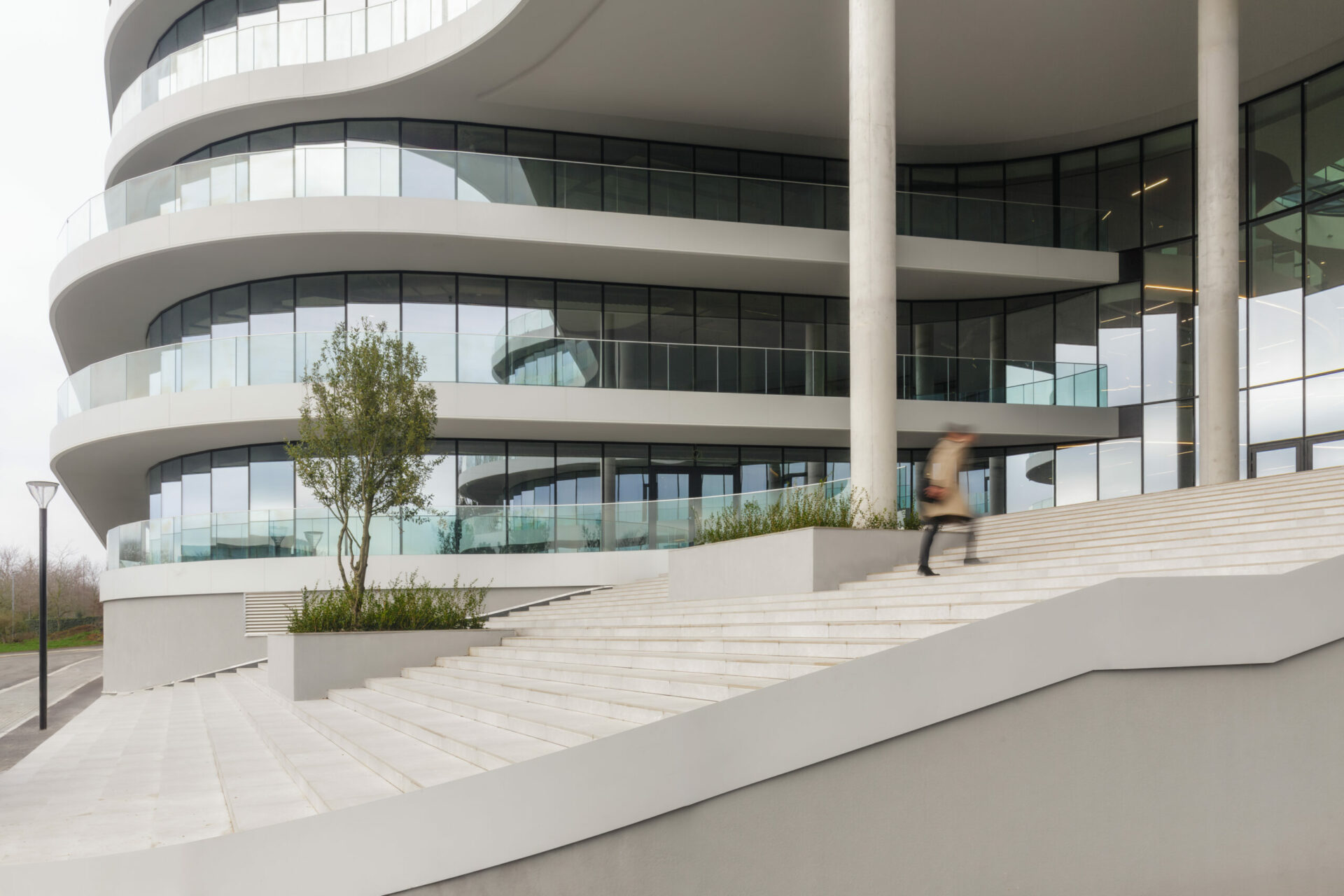
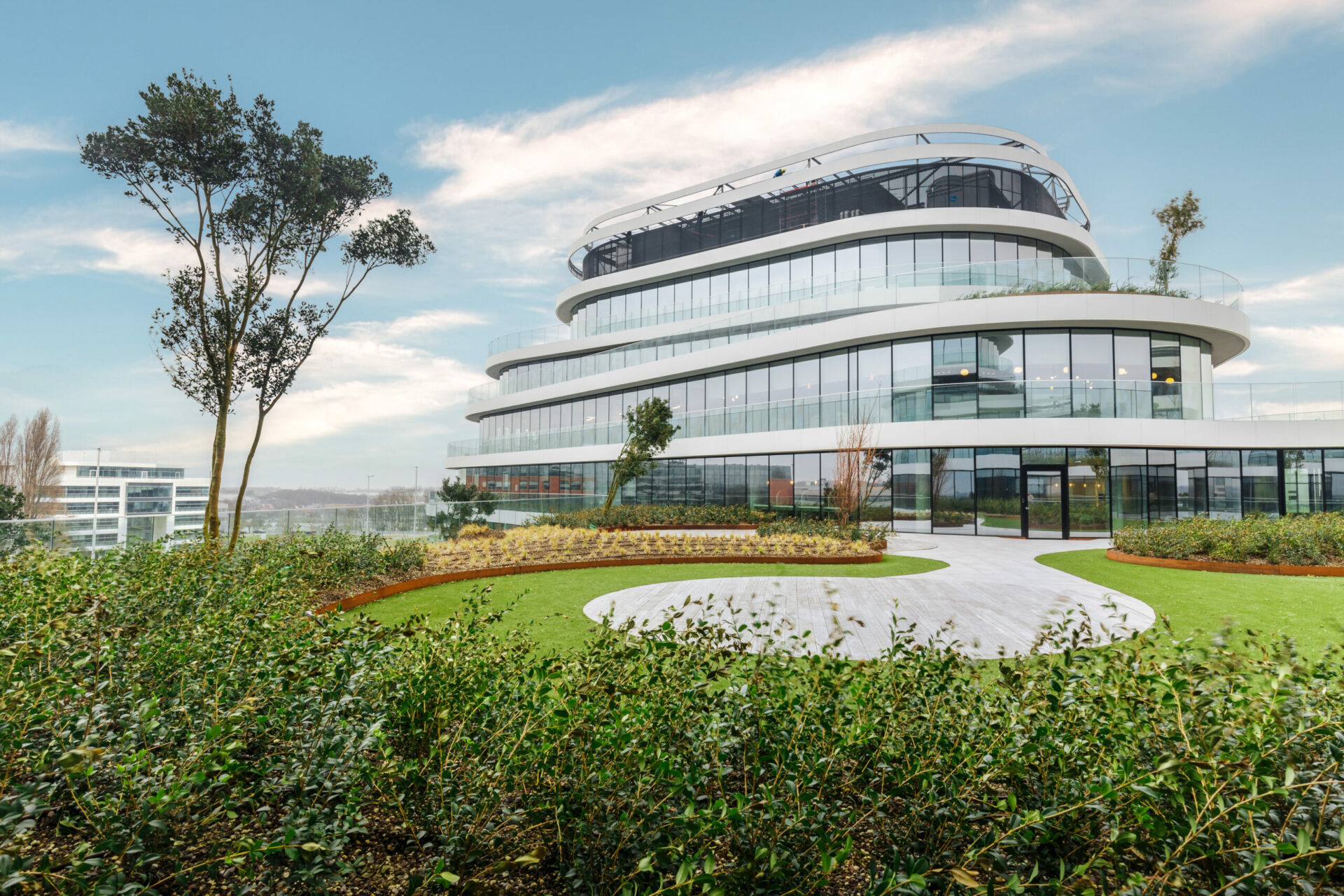
The main concept of the development was to create a basic form and compile it into an organic shape with recessed terraces on all levels. The next step was to refine it around the main axes to create a unique complex system that still retains traces of repetition. This is clearly visible in the plan of the building as a whole.
The four transparent quadrants consist of three office volumes and a hotel. The organic shape efficiently captures daylight, with each “wing” designed as a trapezium initially, later softened and rounded in the design process. Each level recedes and features a large green terrace. These terraces flow through the “wings”, creating high-quality communal spaces that connect the quadrants.
The original green slope serves as the transverse axis and serves as a reference point for integrating greenery within the project. The natural, undulating relief is reflected in both the large atrium and the varying building heights of the four quadrants. This resulted in a permeable complex that provides a subtle response to the natural terrain relief and the scale of the buildings in the surrounding area. With its specific orientation and stepped structure featuring continuous rooftop gardens and terraces, employees and hotel guests enjoy an abundance of views, experiences, and attractive indoor and outdoor spaces.
For the landscaping, we closely collaborated with “flower artist” Daniel Ost, who adeptly responded to the building’s undulating forms. The abundance of greenery on the site fully embodies the architectural objective of creating a perfect balance between work and well-being.
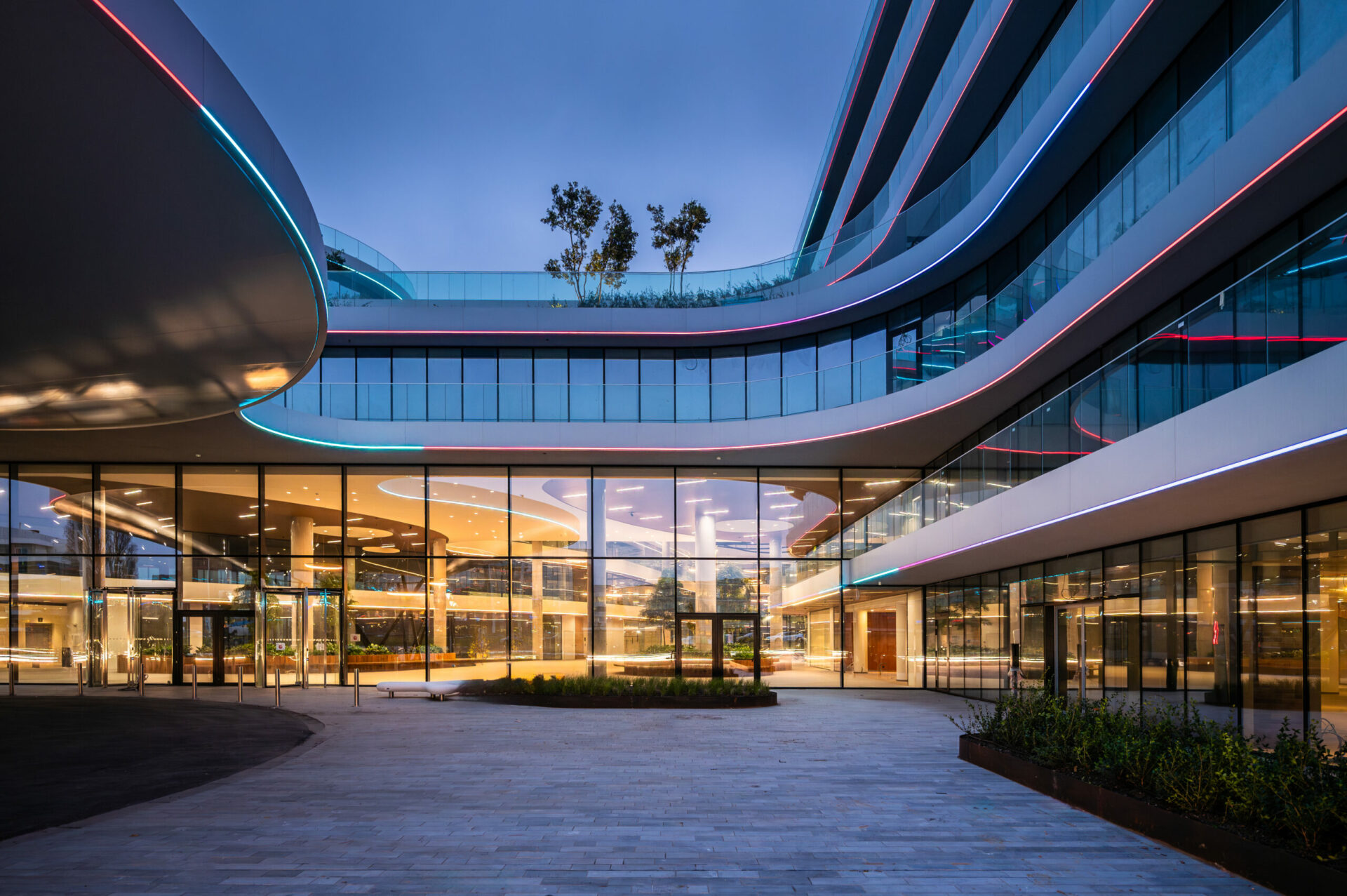
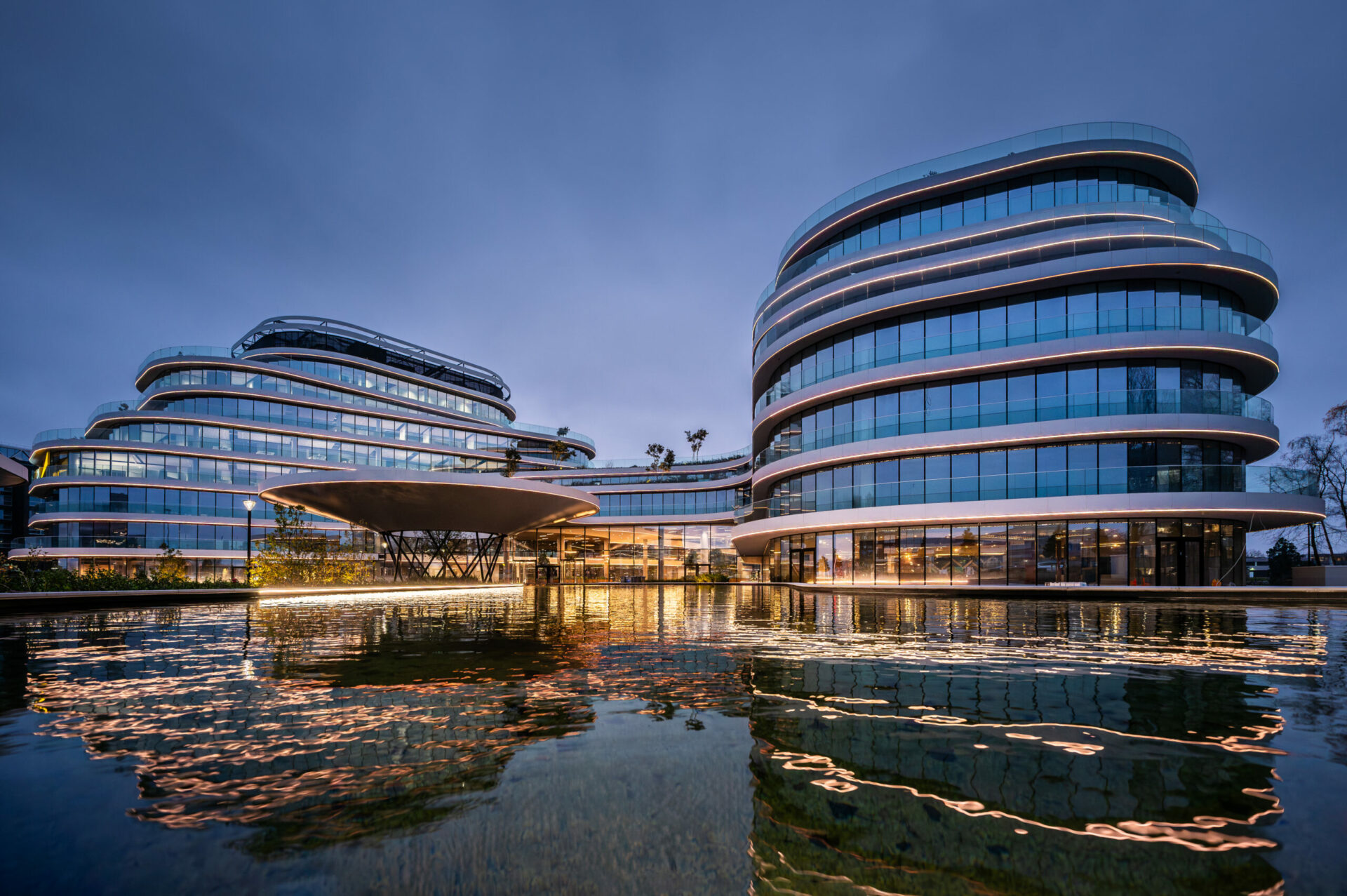
The design adopted a holistic approach to sustainability, creating an exemplary ecosystem for the decades to come. The sustainable building generates its own energy for all internal activities and facilities, without consuming any fossil fuels. This achievement was recognized with a unique triple certification, which also reflects a strong focus on health, comfort, and well-being.
Achieving these lofty ambitions required extensive collaboration, both in the design and execution phases. Measures such as post-tensioning to reduce the thickness of floor slabs and a 30% reduction in concrete usage were implemented. Additionally, aluminum was chosen for facade cladding due to its recyclability. Rainwater harvesting and energy efficiency were maximized through the creation of two large retention basins, over six hundred solar panels, and an extensive BEO (borehole energy storage) field. As part of the BREEAM certification process, carbon emissions are meticulously tracked, and all materials undergo independent life cycle analysis. Furthermore, circular principles were considered, with the building designed to be adaptable, equipped with demountable materials where possible, and registered in Madaster for a materials passport.
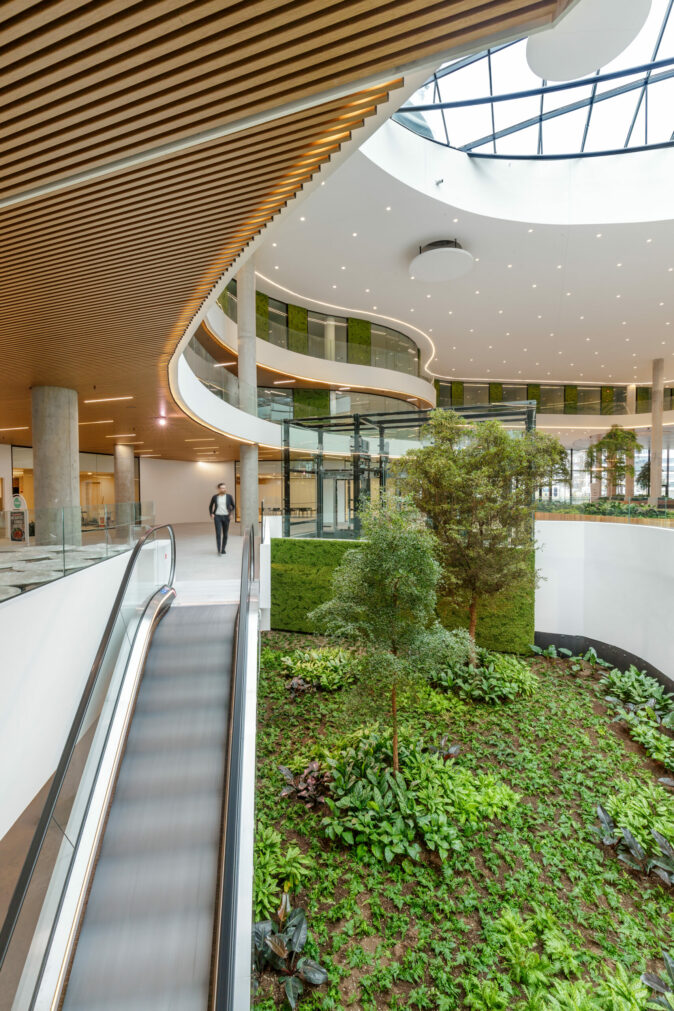
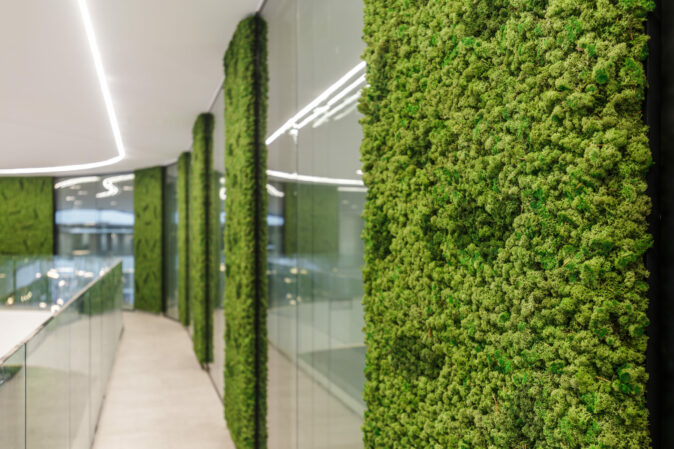
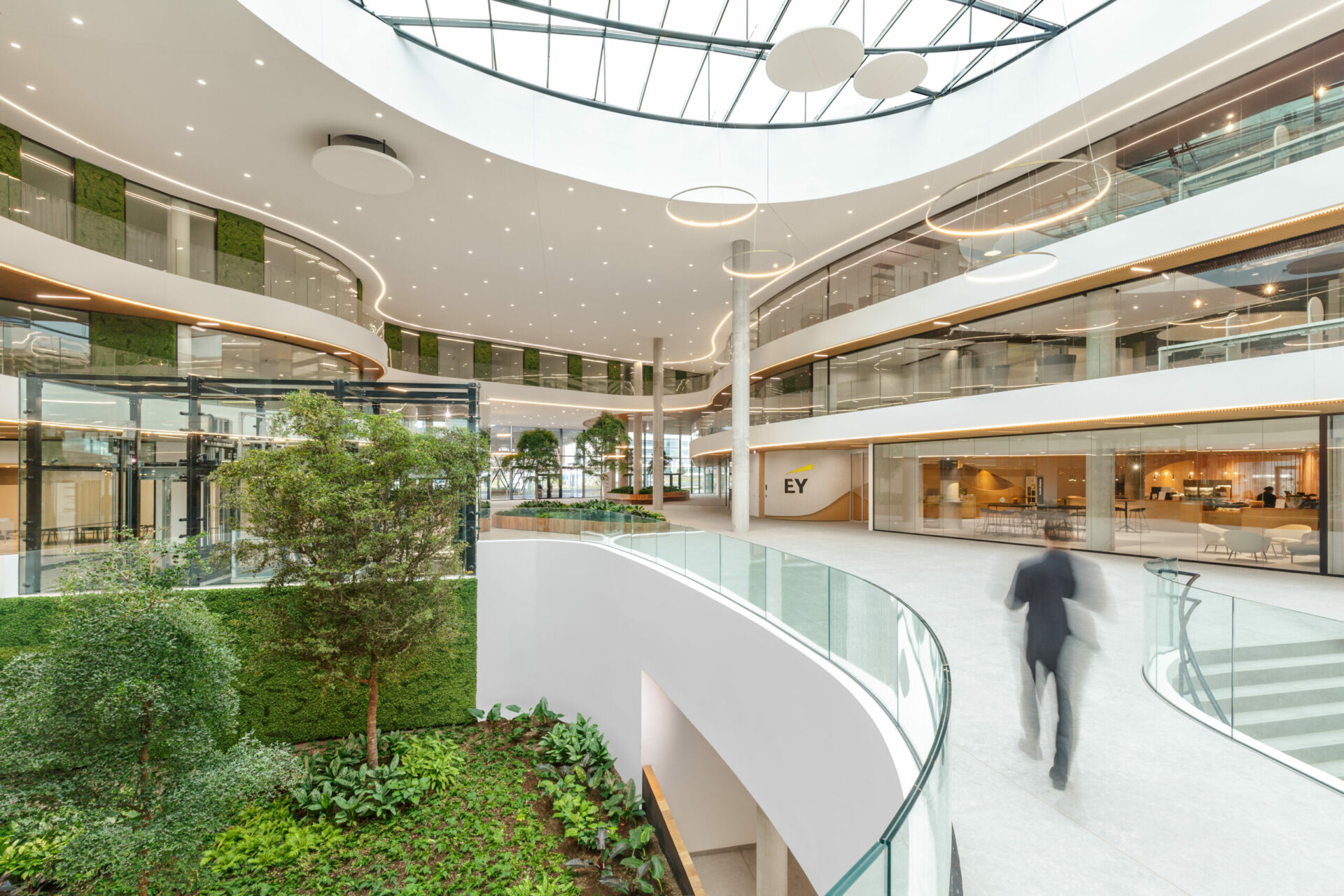
• categories: BEN
• energy performance (E-peil): E 55 for offices · E 70 for hotel
• certification: BREEAM Excellent · WELL Gold · DGNB Gold
